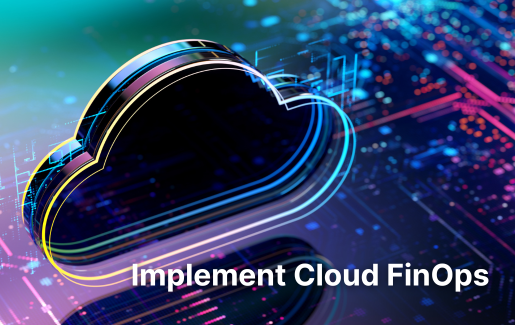 According to Gartner's prediction, "organization spent on public cloud enablement is projected to reach $675.4 billion in 2024, at a CAGR of 20.4%." More than 30% of cloud spending was wasted and inefficient, costing billions of dollars for organizations.
According to Gartner's prediction, "organization spent on public cloud enablement is projected to reach $675.4 billion in 2024, at a CAGR of 20.4%." More than 30% of cloud spending was wasted and inefficient, costing billions of dollars for organizations.
As organizations continue to adopt public cloud infrastructure at a torrential pace, traditional IT financial processes often fall short of addressing dynamic cloud consumption patterns and complex migrations, leading to a lack of visibility into sources of cost overruns. The rise of cloud financial operations, or FinOps, offers an arsenal of tools, resources and wisdom that MSPs can bring to customers to help streamline financial overspending and regain control to achieve business agility.
FinOps can transform the way businesses optimize their cloud spending, enhance visibility and foster collaboration across teams. Let’s explore some problems customers face and areas where opportunities lie for MSPs.
Common Billing Errors in Cloud Services
The following common errors can impact your business:
- The complexity of billing statements: Cloud billing statements are often intricate and lengthy as they include billing metrics that can vary between providers, resulting in misinterpretation of costs and confusion.
- Hidden charges: Additional charges, often stemming from unauthorized usage, misconfigured services or shadow IT projects, can lead to billing disputes and financial discrepancies. It's essential to be vigilant and maintain control to avoid these issues.
- Over-provisioning and idle resources: Organizations often inadvertently over-provision resources more than necessary or fail to shut down idle instances, resulting in unnecessary costs. This often happens when multiple teams share resources.
- Multi-cloud environments: Multi-cloud environments pose significant challenges due to different billing structures and terminologies, making it difficult to track overall cloud consumption effectively.
- Recursive function costs: Recursive function often leads to unexpectedly high charges rapidly even before budget alerts trigger, especially in a serverless environment.
Understanding FinOps Framework
What Is FinOps?
Cloud financial operations is an operational framework that optimizes cloud spending while maximizing the business value and keeping budgets under control. This cultural practice enhances the collaboration between technical, finance and business teams to ensure effective resource utilization. According to McKinsey, cloud FinOps can help organizations reduce cloud costs by 30% to 40% and reduce wasted cloud resources by up to 35%.
Three Phases of FinOps Framework
Beyond cloud cost management, FinOps offers a strategic approach for organizations for their cloud spending. The FinOps framework consists of three tenants: Inform, optimize and operate, emphasizing cloud cost reporting, optimization and continuous improvement.
Inform: Visibility and Allocation
In the inform phase, FinOps helps organizations gather insights into data sources for cloud costs, usage and efficiency from CSPs. By leveraging this data for allocation, analysis and reporting, teams can enhance their capabilities in budgeting and forecasting trends and empower organizations to make informed decisions that optimize their cloud investments.
Optimize: Rates and Usage
This phase focuses on identifying opportunities for enhancing cloud efficiency and additional cost savings by leveraging the capabilities developed in the Inform phase. It involves various options for resource optimization, including rightsizing unused assets, optimizing the container costs, maximizing the reserved instances, adopting modern architecture and managing workloads. It ultimately improves visibility and reporting processes that align with organizational value and their cloud investments.
Operate: Continuous Improvement and Usage
This phase involves implementing organizational changes to improve FinOps practice through establishing cloud governance policies, compliance monitoring, empowering practitioners to create basic budgets and forecasting by evaluating performance that is aligned with business objectives.
6 Core Principles of FinOps Framework
1. Planning and Budgeting
Planning and budgeting are essential components of FinOps strategy as they provide tools for planning, controlling and optimizing cloud spending. It serves as a catalyst for directing the organizations. A recent FinOps foundation survey revealed that “nearly 20% of cloud-based applications owners do not validate their cloud usage budgets.”
2. Visibility
The cost of cloud infrastructure must be transparent to everyone involved so they can understand the impact of their actions on the bottom line and make informed decisions.
3. Cost Optimization
FinOps aims to optimize cloud spending by implementing various techniques for rightsizing resources, eliminating waste and improving efficiency in cloud environments.
4. Accountability
FinOps allows everyone involved in the cloud infrastructure to take responsibility for their costs and work together to optimize spending to drive financial accountability.
5. Collaboration
It emphasizes the shared fiscal responsibility model of the FinOps model, fostering cross-functional communication between finance and technical teams to align cloud spending with business objectives.
6. Governance
Accelerating business value begins with establishing frictionless cloud governance policies to streamline IT financial operations and cloud spending. Moreover, it is crucial to empower IT, finance, and business teams with training to manage and deploy the resources effectively.
Roadmap for Successful FinOps Adoption
Define clear cloud cost management goals: Define the crystallized objectives of the cloud FinOps journey with suitable key performance indicators (KPIs) to monitor its progress toward achieving its objectives.
Create a team to assess the current financial practices: Conduct a thorough assessment of your organization's existing financial practices of cloud usage. Identify the areas where cost optimization can be improved.
Implement cost allocation strategies: Strategically implement robust cost allocation strategies to effectively track and attribute the cloud costs across departments and projects that are aligned with organizational FinOps goals.
Foster a culture of continuous optimization: Regular assessment and adjustments of your FinOps practices are paramount for evolving business needs.
Rightsize resources: Rightsizing involves adjusting cloud resources to optimize balance performance and cloud costs. This process requires a thorough understanding of current resource costs and utilization, including metrics like CPU and memory usage obtained from monitoring tools.
Challenges in Implementing Cloud FinOps
Despite the tangible benefits of FinOps, there are some significant challenges to its implementation. Challenges may arise due to the process, technical implementation or general perception of the changes within the teams, including:
- Cultural shift: Cloud FinOps requires a cultural shift where financial accountability and responsibility are shared across the organization. This can be difficult in companies where finance and technical teams operate in silos.
- Complexity of multi-cloud environments: The dynamic and complex nature of hybrid or multi-cloud environments can make it difficult to track and manage costs effectively.
- Data integrity: Ensuring the accuracy of data for reporting and analysis is critical for effective decision-making.
- Tool integration: Integrating FinOps tools with existing systems can be challenging, especially in organizations with legacy infrastructure.
MSPs must leverage the right FinOps tools and strategies to significantly reduce cloud spending, including both MSPs and the cloud solutions they provide to clients. This involves a one-time comprehensive assessment and the implementation of ongoing FinOps tasks to fully realize the cost-saving benefits and operational advantages that FinOps offers.
Download the CompTIA Community MSP Guidebook:
Cultivating a Process of Culture Efficiency
Thangaraj Petchiappan is CTO-SIMS at iLink Digital.

 Add CompTIA to your favorite RSS reader
Add CompTIA to your favorite RSS reader

